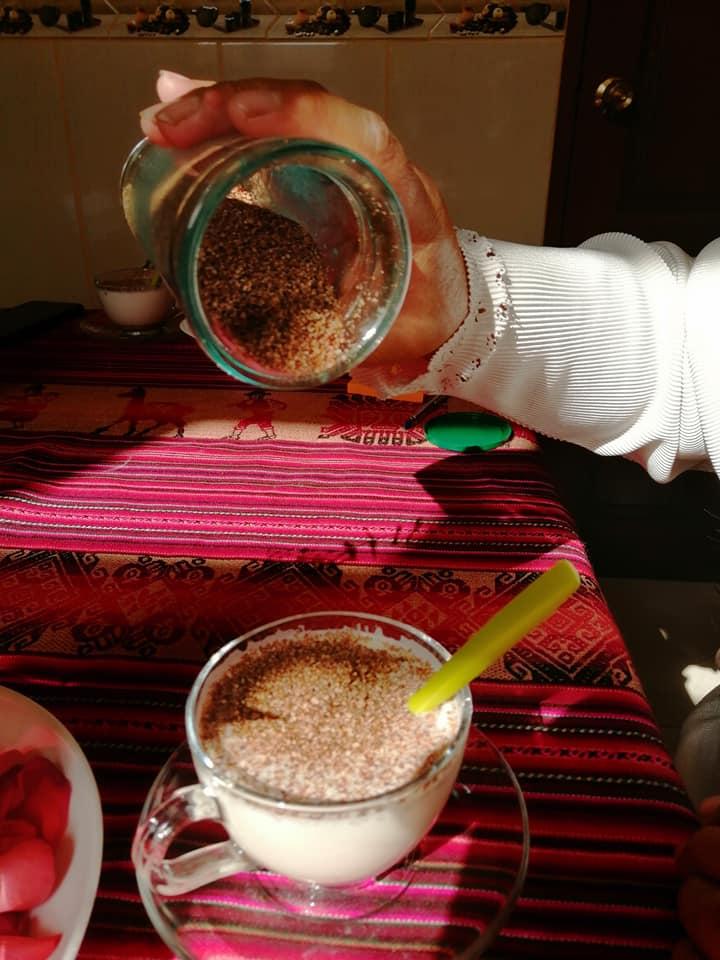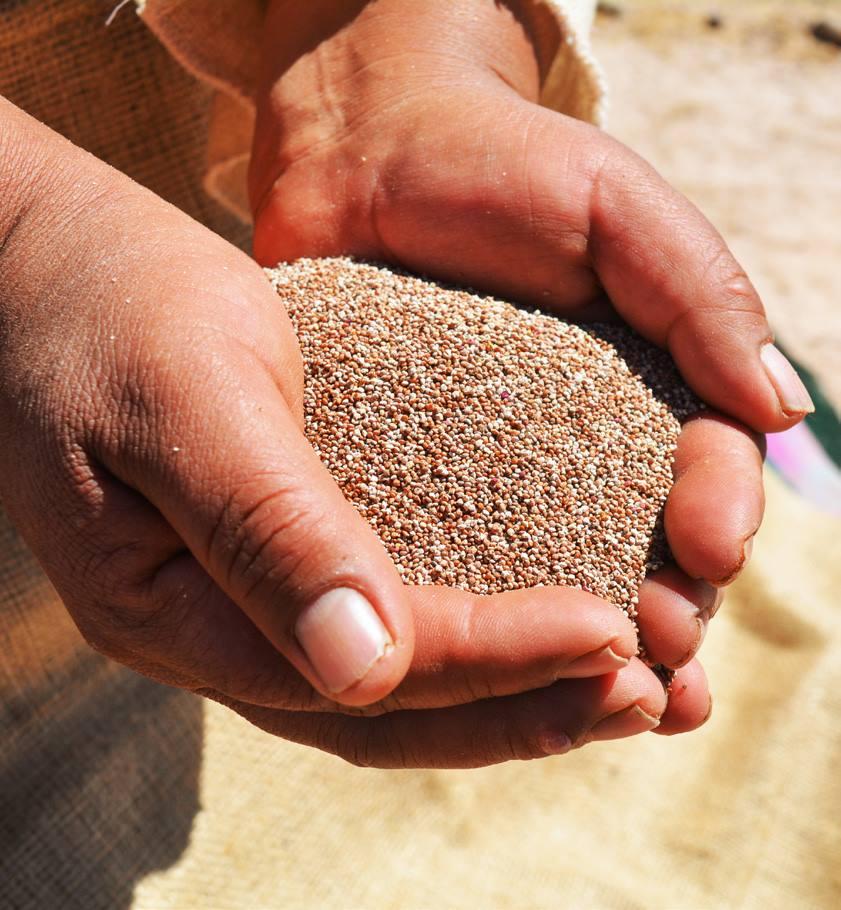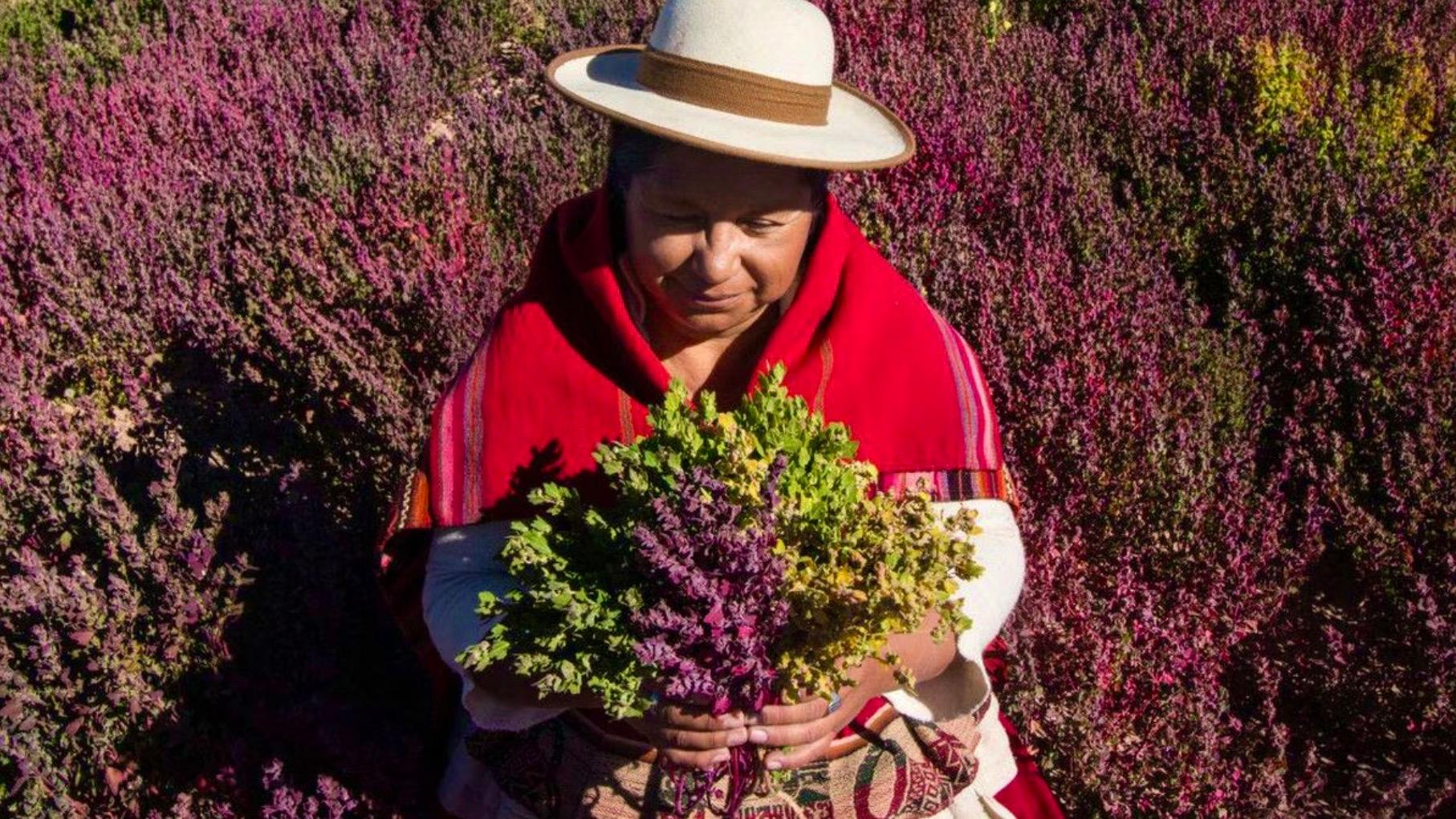An engineer in Bolivia is reviving an ancestral, nutritious grain for the 21st century
Trigidia Jiménez was born in an Indigenous village in the Andean mountains of Bolivia at 14,000 feet above sea level.
She grew up in a family of farmers, and she loved working the land.
But like many others in her town, she moved to the Bolivian capital in search of new opportunities and eventually became an agricultural engineer.
She worked and got married, but after 15 years of being in the city, she realized she wanted to return to the mountains.
“I needed to be in touch with the sun, fresh air and work our land,” Jiménez told The World over Zoom.

Back in the Andes, she started thinking about an ancestral green that was almost extinct — cañahua.
It’s similar to the quinoa plant and virtually unknown outside of Bolivia and Peru.
“That’s what our ancestors used to eat every day. A cup of cañahua for breakfast,” Jiménez said. “We make it like oatmeal.”
Cañahua is “nutritious, high in protein, amino acids and iron.” It has also proven to be very adaptable to climate change, according to Jiménez. Despite unusual and extreme weather conditions, the crop can grow “everywhere around here,” she said.
Jiménez started small, with about an acre of land, producing enough grain for just one family. Two decades later, cañahua is being produced on approximately 5,000 acres.
Bolivia’s government offers subsidies to low-income families to buy cañahua, and that’s helped build the market.
“Now, this crop provides a source of income for 1,500 families,” she said.
A need for crop diversity
As climate change impacts agriculture in many parts of the world, the need for crop diversity is becoming more urgent.
“We realized that we’ve been reliant on too few food crops,” Jeff Maughan, a professor of molecular genetics at Brigham Young University in Utah, told The World.
He said it’s a scary idea to just be reliant on five or six plant species when you start to think about diseases or changes in the weather.
“It’d be like having a portfolio for your 401K, but only had five stocks in it,” he said. “Nobody would do that. You need to spread that security.”
Twenty years ago, Maughan and other researchers at BYU got interested in quinoa as a higher protein crop for subsistence farmers in the Andean region. At the time, he recalled, people would ask him, “What is quinoa?”
Today, quinoa is everywhere — from your favorite supermarket to fancy restaurants. Maughan and his team have successfully introduced the South American grain in Morocco, Rwanda and Saudi Arabia.
“It’s important to learn from Indigenous communities about foods they’ve been producing for thousands of years,” said Juan Gonzalez, an expert in sustainable development at Columbia University.
He said that we’re learning from how it’s been done during most of human history so that we go back to that.

“And what I mean by go back is not that everyone has their own plot of land and start producing their own food,” Gonzalez said. “That’s not the society we live in, but rather learn from the techniques that are being used by more traditional communities and understand that there’s value in that.”
Trigidia Jiménez earned international recognition for helping to revive cañahua cultivation.
“Cañahua made me a stronger woman,” she said. “Powerful and happy.”
It’s also helped sustain the local communities where it’s produced.
Jiménez is now looking at ways to expand her business and export the ancient grain to the United States.
